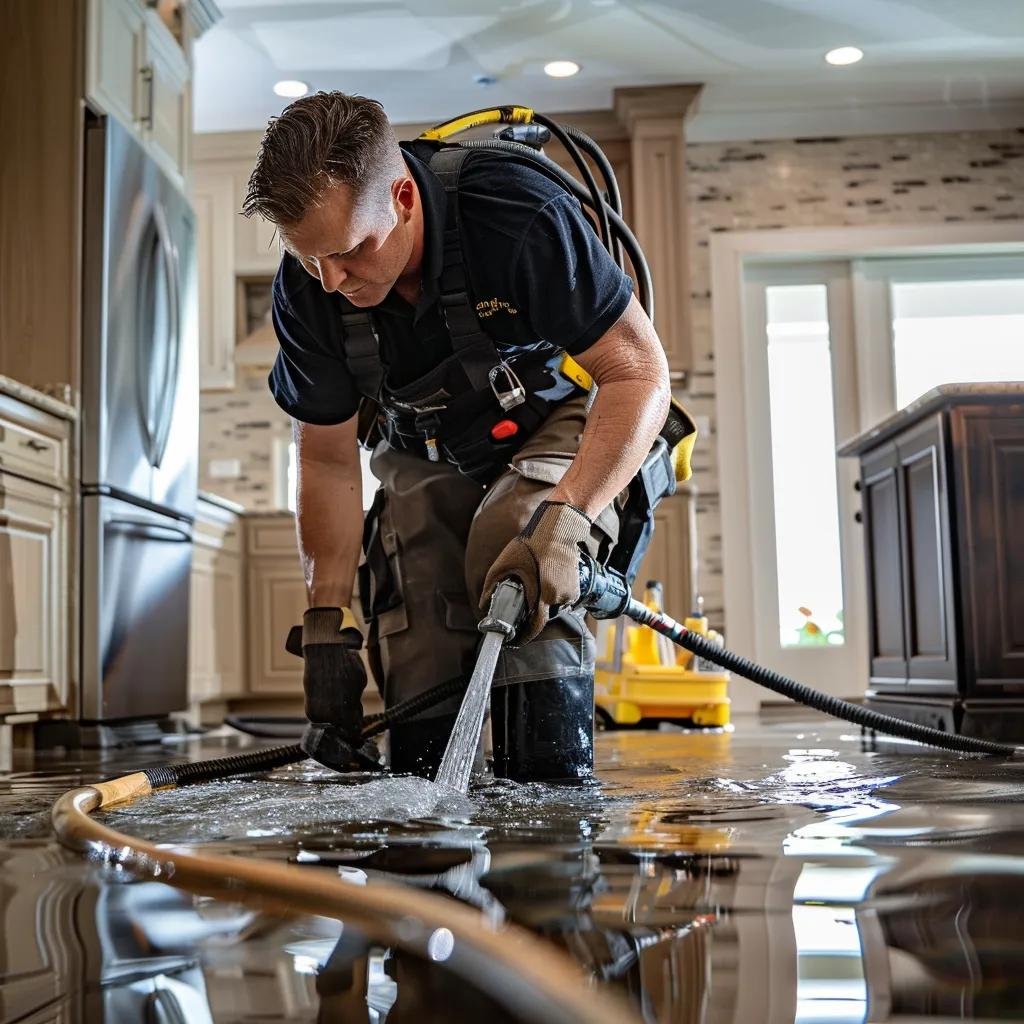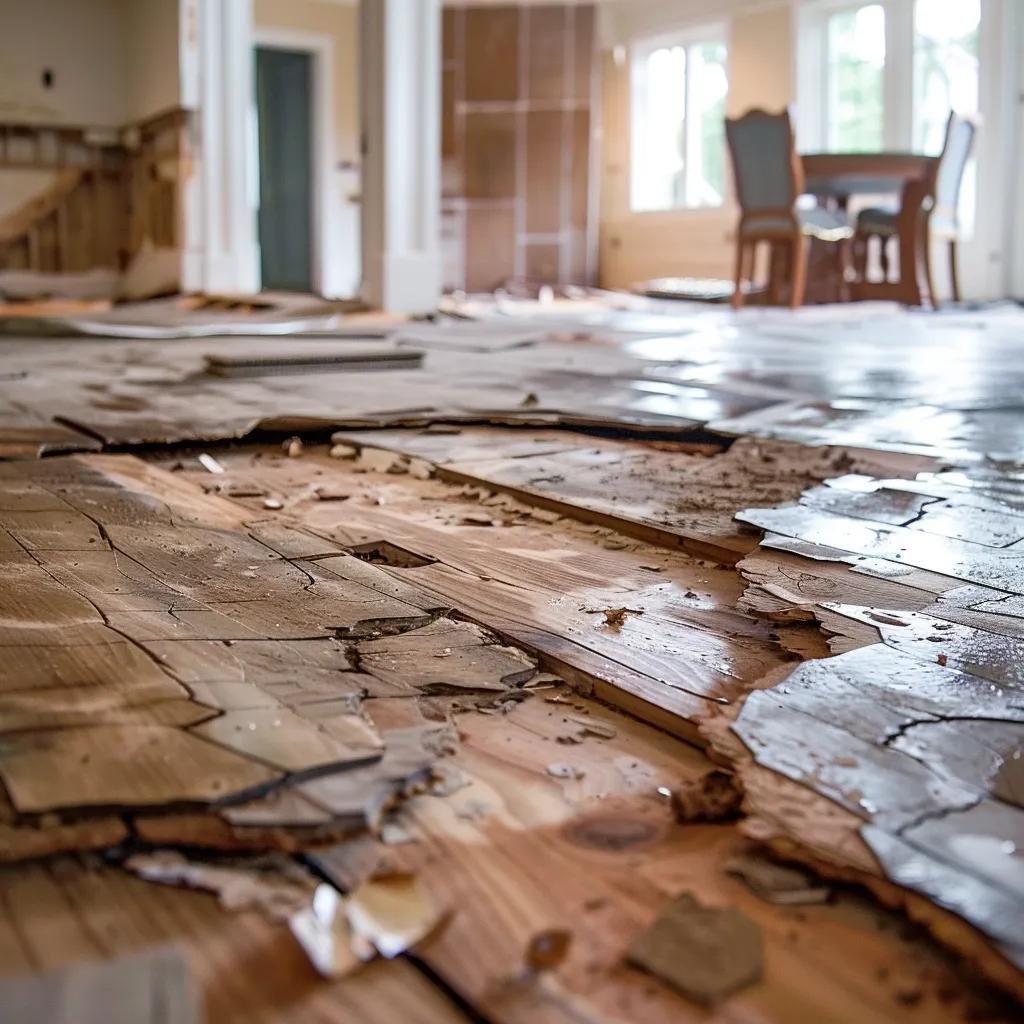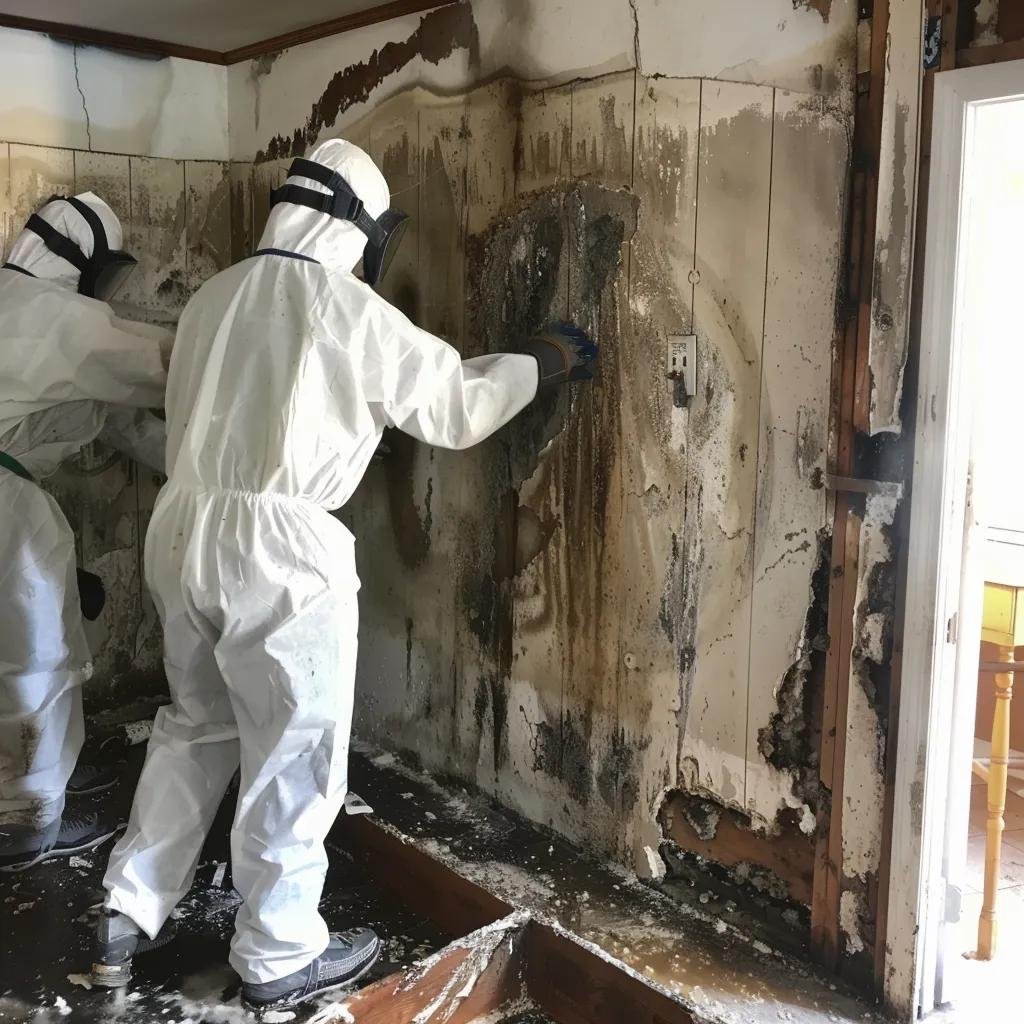
Seattle’s 24/7 Emergency Water Extraction: Prevent Costly Damage
Rapid water intrusion can devastate a property within hours—delaying extraction by just one day can escalate repair costs by up to 60%. As one of the leading 24/7 water removal companies in Seattle, American Water Restorations delivers immediate mitigation and full-scope restoration when every minute counts. In this guide, you will discover:
- Why immediate 24/7 water removal is vital for structural integrity, health, and property value
- The step-by-step process our IICRC-certified technicians follow, from assessment through repair
- Unique benefits of choosing a Seattle, local expert with direct insurance billing and advanced technology
- Proven methods to prevent mold and further damage after extraction
- Clear timing cues for when to call professional water removal services and what costs to expect
Why Is Immediate 24/7 Water Removal Critical for Your Property?
When water damage occurs in a property, whether due to a ruptured pipe, storm flooding, or an accidental spill, the urgency of immediate water removal cannot be overstated. Delaying the extraction of water can lead to a host of problems, including structural damage, mold growth, and significant financial loss. Properties are designed to withstand a certain level of moisture, but prolonged exposure to water can weaken materials, compromise integrity, and create unsafe living conditions. This makes 24/7 water removal services essential for any property owner hoping to mitigate damage and restore their space quickly and effectively.
Furthermore, the health implications of standing water cannot be ignored. When water sits for more than 24 hours, it becomes a breeding ground for mold and bacteria, posing serious health risks to residents. Mold spores can trigger allergic reactions and respiratory issues, while contaminated water may introduce harmful pathogens. Thus, swift action in removing water is not only crucial for preserving the property but also for safeguarding the health and well-being of its occupants. Investing in immediate 24/7 water removal services ensures that property owners minimize damage, reduce restoration costs, and create a safe environment for all.
Immediate water removal is the process of extracting standing water as soon as it appears to halt ongoing damage, prevent microbial growth, and preserve building materials. Acting quickly stops moisture from seeping into walls and floors, which can lead to costly structural failures and health hazards. For example, removing floodwater within hours avoids wood framing warp and tile adhesive breakdown.
How Does Rapid Water Extraction Prevent Structural Damage?

Rapid water extraction prevents structural damage by removing excess moisture that weakens framing, warps wood, and corrodes metal supports.
- Wood Rot → Loss of load-bearing capacity → Framing failure
- Floor Buckling → Adhesive breakdown → Tripping hazards
- Metal Corrosion → Joint weakening → Risk of collapse
By eliminating standing water, extraction protects the property’s foundational elements and preempts secondary issues such as mold and electrical hazards, paving the way for a safe drying phase.
What Are the Health Risks of Delayed Water Removal and Mold Growth?
Delayed water removal fosters mold growth, which releases spores that aggravate respiratory conditions and trigger allergic reactions. Mold can begin colonizing damp materials within 24–48 hours, producing toxins that lead to coughing, skin irritation, and infections. Prompt extraction interrupts this mechanism, safeguarding indoor air quality and occupant health.
Mold Growth and Health Risks
Mold can begin to colonize damp materials within 24–48 hours, releasing spores that can cause respiratory problems and allergic reactions. Prompt water removal is crucial to interrupt this process and protect indoor air quality and occupant health.
Centers for Disease Control and Prevention (CDC)
This citation reinforces the article’s discussion of the health risks associated with delayed water removal and mold growth.
How Does Emergency Water Removal Protect Your Property’s Value?
Emergency water removal protects property value by maintaining structural integrity and preserving finishes, furnishings, and insulation. Fast extraction prevents drywall swelling, carpet delamination, and insulation saturation, all of which reduce market value and complicate insurance claims. Investing in professional flood mitigation ensures that your asset retains its appearance and resale appeal.
What Are the Step-by-Step Processes in 24/7 Water Removal and Restoration?
The 24/7 water removal and restoration process is a structured sequence that guarantees thorough mitigation and recovery: assessment, extraction, drying, cleaning, and repair. Following this proven workflow ensures no moisture remains to trigger mold or deterioration.
- Emergency Response and Assessment
- Professional Water Extraction
- Structural Drying and Dehumidification
- Cleaning, Sanitizing, and Deodorization
- Restoration and Repair
This systematic approach addresses both visible and hidden damage, enabling a full return to pre-loss condition.
How Is Emergency Water Damage Assessed Upon Arrival?
Emergency assessment begins with moisture mapping to pinpoint infiltration and saturation levels. Technicians use:
- Moisture Meters → Measure material water content
- Thermal Imaging Cameras → Reveal hidden wet spots
- Hygrometers → Track ambient humidity
Accurate assessment guides targeted extraction and drying, reducing wasted effort and preventing overlooked wet zones.
What Equipment Is Used for Professional Water Extraction?
Professional water extraction uses high-capacity pumps and industrial vacuums to remove standing water efficiently.
| Equipment | Attribute | Value/Capability |
|---|---|---|
| Submersible Pumps | Flow Rate | Up to 500 GPM |
| Industrial Vacuums | Suction Power | 40 inHg for deep water recovery |
| Portable Extractors | Mobility | 20 gallon tank capacity |
Each tool accelerates water removal, enabling rapid transition to structural drying and preventing secondary damage.
How Does Structural Drying and Dehumidification Work?
Structural drying uses directed airflow and dehumidification to evaporate and remove residual moisture.
- Air Movers → Increase evaporation rate by up to 300%
- Refrigerant Dehumidifiers → Lower relative humidity to 30–40%
- Desiccant Dehumidifiers → Extract moisture from cold or enclosed spaces
Following IICRC standards, this process stabilizes moisture levels and prevents mold spores from gaining a foothold.
What Are the Cleaning, Sanitizing, and Deodorization Steps?
After drying, technicians implement a three-stage hygiene protocol:
- Cleaning removes dirt and debris from surfaces and contents.
- Sanitizing applies antimicrobial solutions to kill bacteria and mold spores.
- Deodorization neutralizes odors using enzymatic or hydroxyl treatments.
Completing these steps restores a healthy environment and eliminates lingering smells that often persist after water events.
How Is Restoration and Repair Completed After Water Removal?
Restoration and repair rebuild damaged areas to their pre-loss condition through:
- Drywall Replacement → Remove compromised sheetrock and install new panels
- Flooring Repair → Refinish hardwood or replace carpet and tile
- Structural Repairs → Reinforce framing, update insulation, and repaint
This final phase ensures a seamless return to everyday life and full asset recovery.
Why Choose American Water Restorations for 24/7 Emergency Water Removal in Seattle?
Choosing an experienced local provider means faster response, tailored solutions, and community trust. American Water Restorations brings four core advantages to every emergency:
What Local Seattle Challenges Do Our Experts Understand?
Our team understands Seattle’s coastal humidity, salt-air corrosion, and seasonal storm patterns that influence water intrusion in homes and businesses. This regional knowledge enables precise moisture management strategies and preemptive measures against common local vulnerabilities.
How Does IICRC Certification Ensure Quality Water Removal?
IICRC certification ensures our technicians adhere to rigorous industry standards for assessment, extraction, drying, and restoration. Ongoing training in the latest methods keeps our staff proficient in advanced moisture mapping, microbial control, and structural drying techniques.
IICRC Standards for Water Damage Restoration
The Institute of Inspection, Cleaning and Restoration Certification (IICRC) sets the standards for the water damage restoration industry, providing guidelines for assessment, extraction, drying, and repair. Following these standards ensures a systematic approach to mitigate damage and prevent mold growth.
Institute of Inspection, Cleaning and RestorationCertification (IICRC)
This citation supports the article’s emphasis on the importance of IICRC certification and adherence to industry standards.
How Do We Assist with Insurance Claims and Direct Billing?
We streamline insurance claims by documenting damage with photos, logs, and moisture readings, then submitting estimates directly to insurers. Direct billing minimizes out-of-pocket costs and accelerates claim approval, freeing property owners from administrative burdens.
What Advanced Technologies and Equipment Do We Use?
Our firm leverages AI-assisted damage assessment tools and IoT moisture sensors to refine restoration planning. Drones equipped with thermal cameras and real-time monitoring apps create precise drying maps, reducing downtime and improving outcome predictability.
How Can You Prevent Mold and Further Damage After Water Removal?
Long-term protection combines vigilant monitoring, environmental controls, and routine maintenance. Keeping indoor humidity below 50% and inspecting prone areas every quarter prevents moisture accumulation and mold colonization.
- Maintain Humidity → Use dehumidifiers in basements and crawlspaces
- Seal Leaks → Repair roof, window, and pipe penetrations promptly
- Monitor Regularly → Employ moisture sensors for early alerts
Consistent upkeep safeguards structural health and indoor air quality, setting the stage for lasting peace of mind.
What Are the Signs of Mold Growth After Water Damage?
Early identification of mold involves spotting:
- Musty Odors → Persistent damp smell in enclosed spaces
- Visible Staining → Dark spots on walls, ceilings, or furnishings
- Allergy Symptoms → Sneezing, coughing, or skin irritation among occupants
Detecting these signs quickly triggers targeted remediation before widespread colonization.
How Does Professional Mold Remediation Complement Water Removal?

Professional mold remediation follows IICRC S520 protocols to contain, remove, and treat microbial growth. Steps include:
- Containment → Seal off affected areas to prevent spore spread
- Removal → Extract contaminated materials and HEPA-vacuum surfaces
- Treatment → Apply EPA-registered antimicrobials and air scrubbers
Integrating remediation with drying completes the mitigation cycle and ensures a safe indoor environment.
What Preventative Measures Protect Your Property Long-Term?
Ongoing prevention relies on:
- Gutter and Drain Maintenance → Channel water away from foundations
- Grading and Landscaping → Slope soil to divert runoff
- Vapor Barriers → Install under slabs and crawlspaces
These measures interrupt moisture pathways and maintain a dry building envelope over time.
When Should You Call 24/7 Water Removal Services?
Knowing when to summon professional help prevents minor leaks from becoming major losses. If water intrusion is visible, odors persist, or flooring shows buckling, immediate action is warranted.
How Quickly Should Emergency Water Removal Be Initiated?
Emergency water removal should begin within 24 to 48 hours to prevent secondary damage and mold formation. Rapid deployment of extraction crews halts moisture migration and preserves building materials.
What Types of Water Damage Require Immediate Professional Help?
Burst pipes, sewer backups (Category 3), and floodwaters contaminated with silt or chemicals demand expert intervention due to health risks and potential structural compromise. Addressing these events quickly protects occupants and property.
How Do You Identify the Severity of Water Damage?
Severity is gauged by water category (clean, grey, black), exposure duration, and visible versus hidden saturation. Combining moisture readings with visual inspection clarifies the restoration scope and appropriate safety protocols.
What Are the Costs and Insurance Considerations for 24/7 Water Removal?
Service pricing reflects the project scale, water category, and required equipment. Understanding cost components and insurance options helps you plan effectively.
How Are Water Removal Services Priced in Seattle?
When seeking water removal services in Seattle, homeowners and businesses often wonder how pricing structures are determined. Generally, water removal costs can vary based on several factors, including the extent of water damage, the type of water involved, and the specific services required. For instance, the presence of clean water—such as from a burst pipe—may be priced differently compared to gray water from household appliances or black water, which comes from contaminated sources. Each type of water presents unique challenges, with black water requiring more rigorous safety protocols and specialized equipment. Companies typically conduct a thorough assessment before providing an estimate, taking into account factors like the square footage of the affected area and the time needed for effective water extraction and drying processes.
Additionally, the region’s unique climate can influence the cost of these services. Seattle’s damp weather often leads to mold growth if water damage is not addressed swiftly. This urgency can affect pricing, as companies may offer expedited services to prevent further damage. Many water removal services also include post-remediation evaluations to ensure that moisture levels are back to normal and that mold has not developed, which can add to the overall cost. Moreover, some providers may offer different pricing models, such as flat rates for specific services or hourly rates based on labor and equipment used. Ultimately, it’s crucial for clients to understand the wide range of factors involved in pricing water removal services and to obtain detailed quotes from multiple providers to ensure a fair assessment of their needs.
Pricing in Seattle,typically ranges from $3 to $7 per square foot for extraction and drying services. Factors include water volume, affected materials, and access challenges in multi-story structures.
How Can You Maximize Insurance Coverage for Water Damage?
To maximize coverage, photograph damage immediately, catalog affected items, and submit detailed estimates without delay. Prompt documentation supports policy terms and accelerates claim resolution.
What Does Direct Insurance Billing Mean for Property Owners?
Direct insurance billing is a financial arrangement that can significantly impact property owners, streamlining their interactions with insurance companies and improving their overall management of property-related expenses. In essence, direct billing allows insurance providers to send premium invoices and payment notifications directly to the property owner rather than routing them through an intermediary, such as a property management company or agent. This process facilitates immediate oversight and control of insurance payments, enabling property owners to monitor their financial commitments more closely and ensure that essential coverage remains uninterrupted.
For property owners, the advantages of direct insurance billing extend beyond mere convenience. By receiving bills directly, owners can organize their payments according to their financial schedules and avoid potential delays that could arise from dependency on third parties. Moreover, this system enhances transparency, as property owners can easily access their insurance policy documents and payment history, helping them make informed decisions regarding their coverage. In a continuously evolving real estate landscape, having a clear understanding of insurance obligations fosters better property management, ultimately contributing to greater protection of assets and peace of mind.
Direct insurance billing means we invoice your insurer directly, reducing your upfront expenses and administrative tasks. This arrangement speeds payment and allows you to focus on recovery rather than paperwork.
What Are Common Questions About 24/7 Water Removal Services?
Property owners often seek clarity on core concerns before engaging a service provider. Key considerations include:
- Understanding the complete restoration process from arrival to repair
- Verifying IICRC certification and technician expertise
- Ensuring safe and effective water cleanup protocols
- Establishing realistic timeframes for full restoration
- Reviewing the types of equipment used for efficient extraction
Answering these points provides confidence and sets clear expectations for any emergency water removal engagement.
American Water Restorations is standing by 24/7 to deliver swift water removal and comprehensive restoration services across Seattle. Our certified technicians follow IICRC standards and utilize advanced equipment to secure your property against water damage. Rely on our local expertise, direct billing support, and proven methodologies to restore your home or business efficiently. Call us now for immediate assistance and free estimates.

